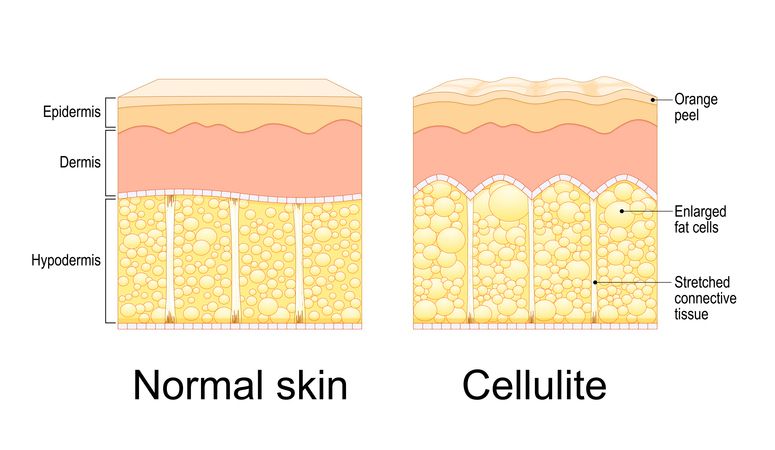Author: Natalie Ng|Updated: 8 May 2025
Ice pick acne scars are one of the most stubborn types of acne scars. They’re narrow, deep, and often caused by severe acne or repeatedly popping acne lesions. These tiny but sharp scars affect the skin's surface and reach into deeper layers of skin tissue, which makes them harder to treat than other types like rolling scars or boxcar scars. While ice pick scars don’t go away on their own, you don’t need surgery to improve how they look. There are several non-surgical acne scar treatments that help smooth pitted acne scars, rebuild skin tissue, and improve overall skin texture. Some focus on stimulating collagen production—like microneedling or laser resurfacing. Others, like chemical peels or topical creams, target the skin surface to help fade acne scarring and support the healing process. If you’re looking for simple, effective ways to treat ice pick scars without going under the knife, this article breaks down 10 options that can help. Keep reading to find the right approach for your skin.

Chemical Peels: Revealing Fresh Skin Beneath
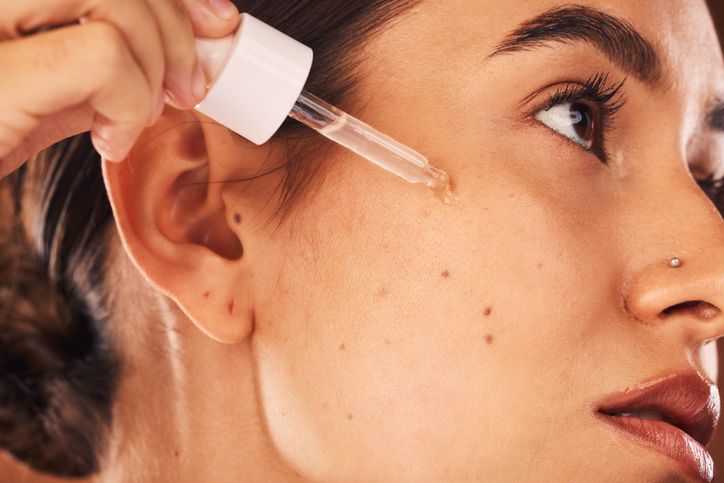
How Chemical Peels Help Treat Ice Pick Acne Scars
Chemical peels can reduce the appearance of ice pick scars by removing damaged skin cells and encouraging new ones to grow. This treatment uses a solution—often with ingredients like salicylic acid or trichloroacetic acid—that gently breaks down the top layer of skin.
Once the peel is applied, it triggers your skin to shed its outer layer. As your skin heals, it starts building new collagen. Over time, this helps fill in narrow scars, smooth pitted acne scars, and improve overall skin texture. Peels also help fade dark marks left by inflamed acne, which is common after severe breakouts.
Choosing the Right Peel for Your Skin
Chemical peels come in different strengths. Light peels target surface-level skin damage, while deeper peels can reach into the lower skin layers where ice pick acne scars form. For deep ice pick scars or atrophic acne scars, your provider may recommend a stronger option like TCA Cross (trichloroacetic acid chemical reconstruction), which focuses on individual scars instead of peeling larger areas of skin.
Peels work best on certain skin types and scar patterns. People with darker skin types may need to be cautious, as stronger peels can increase the risk of hyperpigmentation if not handled correctly.
Results
After a chemical peel, the skin often looks red or feels tight for a few days. Peeling usually follows, which is part of the healing process. As the skin repairs itself, new collagen forms in deeper layers. This helps reduce the depth of ice pick acne scars and improves skin texture. You’ll typically see clearer, smoother skin after a few sessions. Peels also help reduce dark spots and uneven tone from older acne lesions.
Because ice pick scars can be deep, most people need multiple treatments to get noticeable results. Combining peels with other acne scar treatments—like microneedling or fractional laser resurfacing—can improve overall results and support long-term scar reduction.

Professional Microneedling Treatments: Stimulating Collagen from Within
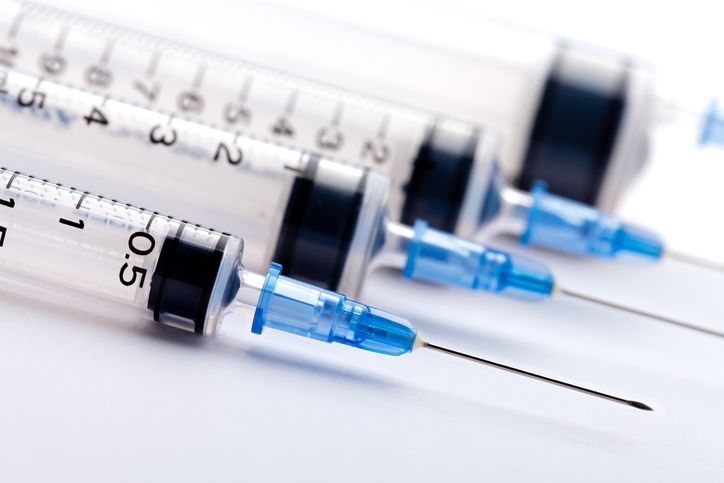
How Microneedling Helps Treat Ice Pick Acne Scars
Microneedling is a minimally invasive technique that uses a device with fine needles to create controlled micro-injuries in the skin. These small punctures trigger the body’s natural healing response, encouraging the production of collagen and elastin in deeper skin layers. This helps rebuild damaged skin tissue and improves the appearance of pitted acne scars, including ice pick scars and other types of atrophic scars.
By stimulating collagen production, microneedling gradually smooths the skin’s surface, softens deep acne scars, and enhances overall skin texture. The process targets both the visible skin damage and the deeper layers where scar tissue forms.
What Happens During the Treatment
Your provider will begin by cleansing your skin and applying a topical numbing cream to reduce discomfort. Once the skin is numb, they’ll use a microneedling device across the treatment area, creating thousands of tiny channels in the skin. These controlled injuries reach the deeper layers without damaging the surrounding skin.
Each session typically lasts around 30 to 60 minutes. Most patients experience redness, swelling, and a tight or warm feeling—similar to a mild sunburn—for 1 to 3 days. These side effects are expected and part of the skin healing process.
Results
You may start seeing early signs of improvement, such as smoother skin texture, within the first 2 weeks. For deeper ice pick scars, the changes are more gradual. As your skin continues producing collagen over the following months, the depth of acne scars begins to reduce.
Significant improvements are usually visible after 3 to 6 sessions, spaced 4 to 6 weeks apart. With consistent treatment, many patients see up to a 50–75% reduction in the appearance of deep acne scars. Results continue developing over a 6- to 12-month period, depending on how your skin heals and how severe the scarring is.
Book Now to Experience
Acne Treatment
1 Minute Self-Registration
Date should not be before minimal date

Retinoid-Based Topical Solutions: Boosting Skin Renewal Over Time
How Retinoids Treat Ice Pick Acne Scars
Retinoids are a group of vitamin A-based compounds that help improve skin texture by increasing cell turnover and stimulating collagen production in deeper skin layers. They’re commonly used in acne scar treatment plans, especially for addressing atrophic scars like ice pick acne scars.
By speeding up how your skin renews itself, retinoids help reduce the appearance of deep, narrow scars over time. They also promote smoother skin and can fade pigmentation left behind from previous acne lesions.
How to Use Retinoids Correctly
Retinoids come in different strengths. Over-the-counter products usually contain retinol, while prescription options like tretinoin are stronger and more effective for treating ice pick scars.
You should apply retinoids in the evening, starting with a low concentration (such as 0.025%) to avoid irritation. Use a pea-sized amount and spread it evenly over clean, dry skin. As your skin builds tolerance, you can slowly increase the strength and frequency.
It’s normal to experience mild redness, peeling, or dryness at first. To manage irritation, apply a gentle moisturizer after the retinoid or use it every other night until your skin adjusts.
Results
Retinoid treatments don’t give instant results. You’ll likely notice early signs of improvement—like smoother texture and less visible scarring—after 2 to 3 months of regular use. Deeper ice pick acne scars may take longer to respond, but continuous application encourages collagen remodelling and helps rebuild scarred skin tissue over time.
While retinoids won’t fully remove deep ice pick scars, they’re effective at softening their edges, improving the surrounding skin, and reducing the contrast between scarred and healthy areas.
Important Tips for Success
Because retinoids increase your skin’s sensitivity to sunlight, you must apply broad-spectrum sunscreen every morning. Sun exposure without protection can cause irritation, delay healing, and worsen the appearance of existing scars.
Consistency is key with this acne treatment. It works best when used as part of a daily routine and may also be combined with other professional treatments to enhance results.

Dermal Fillers and Injectables: Lifting Depressed Scars Instantly
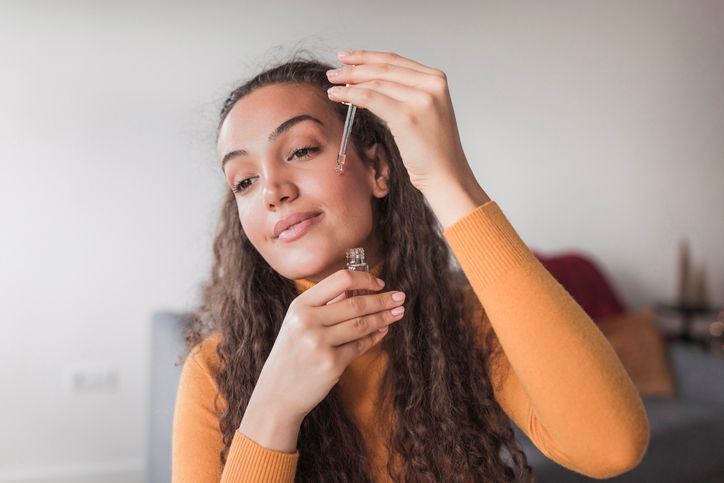
How Dermal Fillers Work on Ice Pick Acne Scars
Dermal fillers offer a temporary way to improve the look of deep ice pick acne scars and other depressed scars by adding volume beneath the skin’s surface. When injected into the base of an ice pick scar, the filler raises the skin to a more even level, making scars less visible.
These fillers also stimulate collagen production in the treated area, which helps improve the structure of the skin over time. This treatment is especially helpful for narrow scars that don’t respond well to topical creams or surface-level treatments.
Types of Fillers Used
The two most common filler types for acne scarring are hyaluronic acid and collagen-based fillers.
Hyaluronic Acid Fillers
Hyaluronic acid is a substance found naturally in the skin. It attracts water and creates temporary fullness in sunken areas. Results usually last between 6 to 12 months and can be reversed if needed.
Collagen-Based Fillers
Collagen fillers are designed to rebuild the skin’s internal support system. They may last 12 to 18 months and continue encouraging collagen growth even after the filler breaks down. However, some collagen fillers can cause allergic reactions and may require a skin test before treatment.
Results
Most people see visible improvement right after their filler session, with full results developing over the next few weeks as swelling fades and collagen begins to form. The improvement typically peaks within 2 to 3 months.
To maintain results, follow-up sessions are usually needed every 8 to 12 months, depending on the product and your skin’s response. For severe scarring, you may need multiple sessions over one to two years for longer-lasting changes.

LED Light Therapy Sessions: Supporting Skin Healing with Light
How LED Light Therapy Helps Ice Pick Acne Scars
LED light therapy is a non-invasive acne scar treatment that uses different wavelengths of light to support the skin’s natural healing process. It’s commonly used to treat ice pick acne scars, reduce inflammation, and promote collagen production without damaging the skin's surface.
Each color of light targets a specific concern. The treatment is painless, doesn’t break the skin barrier, and can be done alone or combined with other procedures for better results.
Types of Light and Their Effects
Red Light
Red light penetrates into the deeper skin layers and triggers collagen induction therapy. This helps fill in atrophic scars like ice pick scars by supporting new collagen growth in damaged skin tissue.
Blue Light
Blue light kills acne-causing bacteria in the skin’s pores. While it doesn’t directly treat existing scars, it reduces inflamed acne and prevents new breakouts that could lead to more severe scarring.
Yellow Light
Yellow light supports lymphatic drainage and reduces redness in surrounding skin. It helps calm sensitive areas and speeds up the healing process after treatments like microneedling or chemical peels.
Results
You’ll need multiple treatments, typically spaced 1 to 2 weeks apart. Each session lasts around 20 to 30 minutes. LED therapy doesn’t produce immediate results for ice pick scars, but with consistent use, you’ll notice improvements in skin texture, tone, and healing over time.
While it doesn’t remove deep scars on its own, it plays a valuable role in acne scar treatment plans. It helps prepare the skin for more intensive treatments and improves how the skin heals afterward.
Book Now to Experience
Acne Treatment
1 Minute Self-Registration
Date should not be before minimal date

Natural Remedies and Home Care: Supporting Skin Between Treatments
How At-Home Care Helps Treat Ice Pick Scars
While professional treatments address deeper layers of skin tissue, consistent home care plays an important role in keeping your skin healthy and improving the overall look of ice pick acne scars. Natural ingredients and simple routines can support skin healing, reduce inflammation, and maintain results between clinical sessions.
Home care won’t replace treatments like microneedling or laser resurfacing, but it can help manage surface-level damage and support the skin's healing process over time.
Natural Ingredients That Support Scar Repair
Aloe Vera
Aloe vera gel helps calm inflamed acne and supports healing in scarred areas. Its moisturizing properties keep skin hydrated and may reduce the appearance of pitted acne scars by improving skin texture.
Rosehip Oil and Jojoba Oil
Natural oils like rosehip and jojoba are rich in antioxidants and essential fatty acids. They help strengthen skin tissue, fade dark marks left by acne lesions, and maintain the skin’s moisture barrier.
Honey and Lemon Juice (Used with Caution)
Raw honey has antibacterial properties and may support scar repair by promoting gentle exfoliation and hydration. Lemon juice, while sometimes used to fade dark spots, can be irritating and increase sun sensitivity. It should only be used sparingly and never on broken or inflamed skin.
Daily Habits That Improve Skin Healing
Create a simple, consistent skincare routine using gentle products that avoid harsh exfoliants or alcohol-based ingredients. Look for formulas with ingredients that promote collagen production, such as vitamin C or niacinamide, and avoid popping pimples, which can lead to deeper scarring.
Apply sunscreen every day, even when indoors. UV exposure slows the healing process, darkens existing scars, and increases the risk of post-inflammatory hyperpigmentation, especially for darker skin types.
Results
Home care helps improve your skin’s overall condition but won’t remove deep ice pick scars on its own. With regular use, you may notice brighter skin, smoother texture, and reduced redness around scars. When combined with professional treatments, it helps your skin respond better and recover faster.

Essential Skincare Ingredients for Scar Repair: Building Stronger, Smoother Skin
How Ingredients Work Together to Treat Ice Pick Acne Scars
To support your skin’s healing and improve the look of ice pick acne scars, certain ingredients in skincare products can make a real difference. These ingredients help with collagen production, exfoliation, and skin regeneration. When used consistently, they improve the skin’s surface and support deeper layers affected by acne scarring.
Each ingredient works in a specific way, and combining the right ones can help manage different aspects of scar repair—from smoothing rough texture to filling in sunken scars.
Retinoids: Stimulating Collagen in Deep Skin Layers
Retinoids help repair atrophic scars by boosting collagen production and speeding up cell turnover. They’re especially helpful for deep ice pick scars that affect the lower skin layers.
• Prescription options like tretinoin work faster and more effectively than over-the-counter versions
• Start with a low strength to reduce irritation and increase slowly
• Use at night, and pair with sunscreen in the morning to protect sensitive skin
You’ll need to give retinoids time. Most people see clearer texture and softer scar edges after 2 to 3 months of regular use.
Niacinamide and Peptides: Strengthening Skin and Reducing Inflammation
Niacinamide, a form of vitamin B3, helps reduce redness, control oil, and protect the skin barrier. It supports healing and helps smooth out scarred skin without causing irritation.
Peptides are short chains of amino acids that signal your skin to build more collagen and elastin. These proteins improve firmness and structure, helping to fill in depressed scars.
Using products with both niacinamide and peptides can help rebuild weakened skin over time and improve overall skin texture.
Alpha Hydroxy Acids (AHAs): Exfoliating Dead Skin and Revealing Fresh Layers
AHAs remove dead skin cells on the surface and promote new cell growth. This process softens the appearance of pitted acne scars and improves skin tone.
• Glycolic acid is the strongest AHA and works best for thick, damaged skin
• Lactic acid is gentler and helps maintain hydration
• Mandelic acid suits sensitive skin and also has antibacterial effects
Start with low concentrations and use 1–3 times per week. Always wear sunscreen, as AHAs increase sun sensitivity.

Vitamin C and Antioxidant Treatments: Strengthening Skin and Supporting Repair
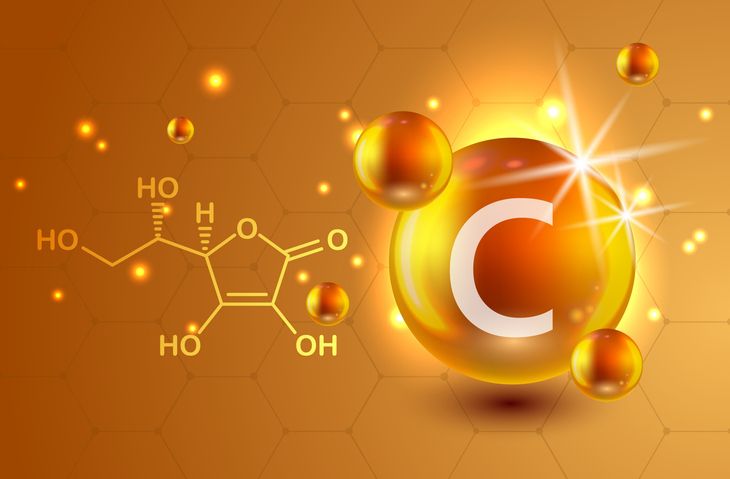
How Vitamin C Helps With Ice Pick Acne Scars
Vitamin C is a powerful antioxidant that supports collagen production and helps repair damaged skin tissue. For ice pick acne scars, it works by encouraging new collagen to form in the deeper skin layers, which can slowly reduce the appearance of narrow, sunken scars over time.
It also brightens dark spots from older acne lesions and protects your skin from further damage caused by free radicals and sun exposure.
Using Vitamin C Correctly
Topical vitamin C is most effective when used in serum form, usually in concentrations between 10% and 20%. Look for products that list ascorbic acid as the active ingredient, as this form absorbs well into the skin.
• Apply vitamin C in the morning after cleansing
• Follow with a moisturizer and a broad-spectrum sunscreen
• Store your serum in a cool, dark place to keep it stable
Consistent use helps reduce discoloration and improves the look of atrophic acne scars. It also helps protect the surrounding skin and promotes an even tone.
Other Antioxidants That Help With Acne Scarring
While vitamin C is often the main focus, other antioxidants can also support the healing process and improve scar appearance:
• Vitamin E helps moisturize and soothe scarred skin
• Niacinamide strengthens the skin barrier and reduces inflammation
• Green tea extract calms irritated skin and may help reduce inflamed acne that leads to more scarring
Combining these ingredients with vitamin C creates a stronger defense against further skin damage while improving the texture and tone of scarred areas.
Results
Antioxidants won’t remove deep ice pick scars on their own, but they make a noticeable difference when used regularly. You’ll see brighter skin, improved tone, and gradual softening of scar edges. They also prepare the skin to respond better to other treatments like microneedling or laser resurfacing.
Book Now to Experience
Acne Treatment
1 Minute Self-Registration
Date should not be before minimal date

Professional Dermabrasion Techniques: Smoothing the Skin’s Surface
What Dermabrasion Does for Ice Pick Acne Scars
Professional dermabrasion is a resurfacing treatment that physically removes the outer layers of skin using a high-speed rotating tool. This helps reduce the visibility of skin scars, including ice pick acne scars, by smoothing the skin’s surface and encouraging new tissue growth.
Unlike microdermabrasion, which only targets the top layer, dermabrasion goes deeper—making it more effective for severe scarring like atrophic scars and deep acne scars.
How the Procedure Works
During the treatment, a dermatologist uses a handheld device to exfoliate the top and middle skin layers. This process removes damaged cells and triggers the skin’s healing response, leading to new collagen formation in the treated areas.
• A numbing agent or local anesthesia is applied beforehand
• The treated area is carefully abraded to a specific depth
• After the procedure, your skin may feel raw, sensitive, and red for several days
Proper aftercare is important to protect the healing skin and avoid irritation. You’ll need to avoid sun exposure, harsh products, and physical exfoliants during recovery.
Results
You may notice smoother skin and improved texture after the first few weeks. As collagen continues to form, the appearance of pitted acne scars becomes less pronounced. Multiple treatments, spaced weeks apart, are usually needed for visible improvement in deeper scars like ice pick acne.
Final results depend on the depth of your scars, your skin’s healing speed, and the skill of your provider. Most patients with deep scars see gradual progress with each session.

New Beauty’s Acne Treatment: Supporting Recovery for Ice Pick Acne Scars
How the Acne Treatment Supports Scar Repair
Treating ice pick acne scars often requires more than one approach. The Acne Treatment is a non-invasive option that helps prepare your skin for deeper treatments and supports faster healing. While it doesn’t remove deep scars by itself, it works by improving skin health, reducing inflammation, and clearing blocked pores—key steps in reducing future scarring and supporting smoother skin texture.
This treatment is especially helpful for acne-prone and sensitive skin. It targets clogged pores, active acne, and oily skin, all of which contribute to the formation of deep acne scars like ice pick scars.
How It Works
The treatment begins with dual spiral suction combined with drainage technology. This clears out dead skin cells, sebum, and dirt from within the pores. Removing these impurities helps calm inflamed acne and lowers the risk of future breakouts, which can lead to more severe acne scars.
Once the skin is clean, a hydrating serum is infused into the deeper layers. This serum supports skin healing by balancing oil production and encouraging collagen production in the deeper layers of skin tissue. This is important for people with atrophic scars, including pitted acne scars, where the skin structure has been weakened.
Advantages for Ice Pick Scarring
• Clears blocked pores, reducing inflamed acne that can lead to deeper scarring
• Calms active acne lesions to prevent further skin damage
• Hydrates and strengthens the skin barrier to support the healing process
• Encourages collagen production to enhance the effects of treatments like microneedling or chemical peels
• Safe for regular use, especially for individuals with acne-prone skin and existing ice pick acne scars
By improving your skin’s condition, this treatment helps other acne scar treatments work more effectively. Clean, calm skin responds better to procedures like microneedling, laser resurfacing, or TCA Cross.
Ongoing Care
Most people benefit from a series of monthly sessions. While results vary, combining this with other acne scar treatments leads to clearer skin, fewer breakouts, and a better foundation for long-term scar reduction.
Want to support your skin and reduce future scarring? Book a session of the Acne Treatment and see how healthier skin can lead to better results.
Want to support your skin and reduce future scarring? Book a session of the Acne Treatment and see how healthier skin can lead to better results.Book Now to Experience
Acne Treatment
1 Minute Self-Registration
Date should not be before minimal date
FAQ
1. Can I treat ice pick acne scars at home using natural remedies only?
Natural remedies like aloe vera, honey, or essential oils may improve skin hydration and reduce surface inflammation, but they cannot reach the deeper skin layers where ice pick acne scars form. These scars are a type of atrophic acne scar that require targeted treatments like microneedling, chemical peels, or laser resurfacing to rebuild collagen and repair deep skin tissue. Home care is helpful for maintenance, but it won’t replace professional treatments needed to treat deep ice pick scars.
2. Are ice pick scars permanent if left untreated?
Yes, ice pick scars are usually permanent if not treated. These narrow, deep acne scars are caused by the destruction of collagen during the healing of severe acne or cystic acne. Without professional acne scar treatments such as collagen induction therapy, trichloroacetic acid chemical reconstruction (TCA Cross), or fractional laser resurfacing, the scar tissue will not rebuild itself naturally. Early treatment of acne lesions is also important to prevent the formation of new scars.
3. Is there any acne treatment that works for darker skin types with ice pick scars?
Yes, but it requires careful selection. People with darker skin types need to avoid aggressive resurfacing treatments that can cause post-inflammatory hyperpigmentation. Treatments like TCA Cross (in controlled concentrations), microneedling, and LED light therapy are generally safer options. Chemical peels using salicylic acid and lactic acid may also be effective when used under professional supervision. Always consult a professional experienced in treating acne scars on darker skin to minimize risk and achieve better results.
4. What’s the difference between ice pick scars and other types of acne scars?
Ice pick scars are narrow, deep scars that look like small holes in the skin. They often result from inflammatory acne that damages the skin layers deeply. In contrast, rolling scars appear as shallow depressions with sloped edges, while boxcar scars have sharper edges and are wider than ice pick scars. Hypertrophic and keloid scars, on the other hand, are raised rather than sunken. Each type responds to different acne scar treatments, so identifying the correct type is important for choosing the right method.
5. Can I use acne treatments like benzoyl peroxide or salicylic acid to fade ice pick acne scars?
Benzoyl peroxide and salicylic acid are effective for treating active acne but won’t significantly fade existing ice pick acne scars. These ingredients can help prevent new breakouts and reduce inflammation, which lowers the risk of developing more severe scarring. For scar reduction, treatments that target the deeper layers of skin—such as dermal fillers, microneedling, or laser resurfacing—are more effective. However, using these acne treatment ingredients as part of your routine can support overall skin health and prevent further damage.
Recommended Articles
COPYRIGHT© NEW BEAUTY MANAGEMENT LIMITED 2025. ALL RIGHT RESERVED.

